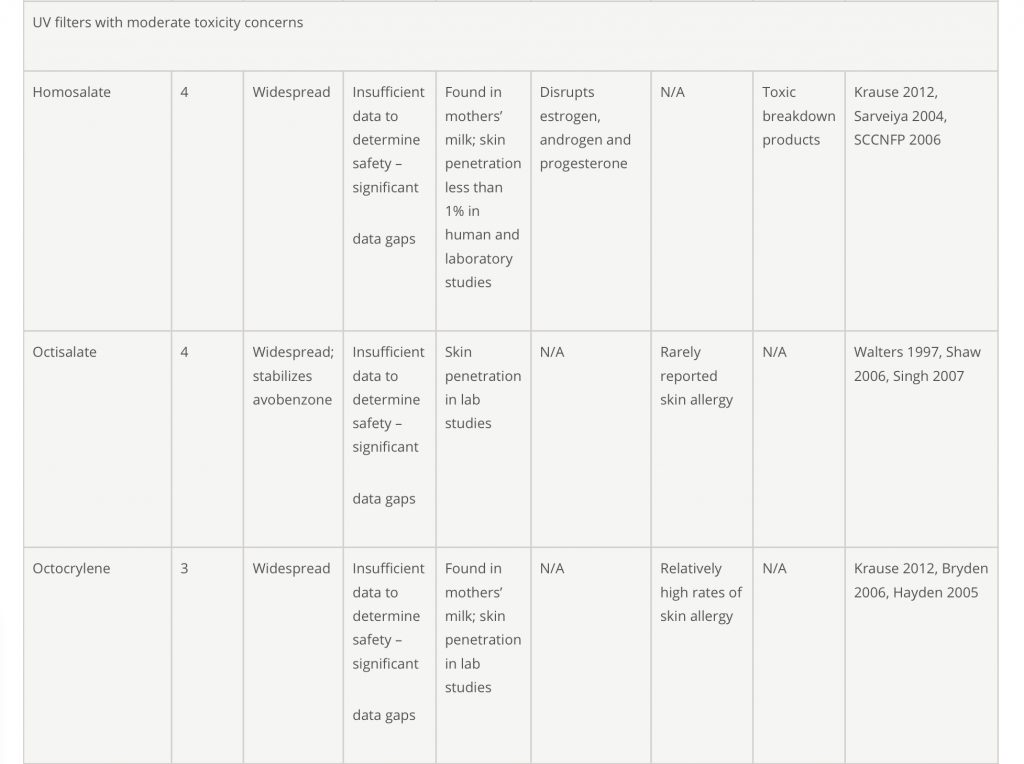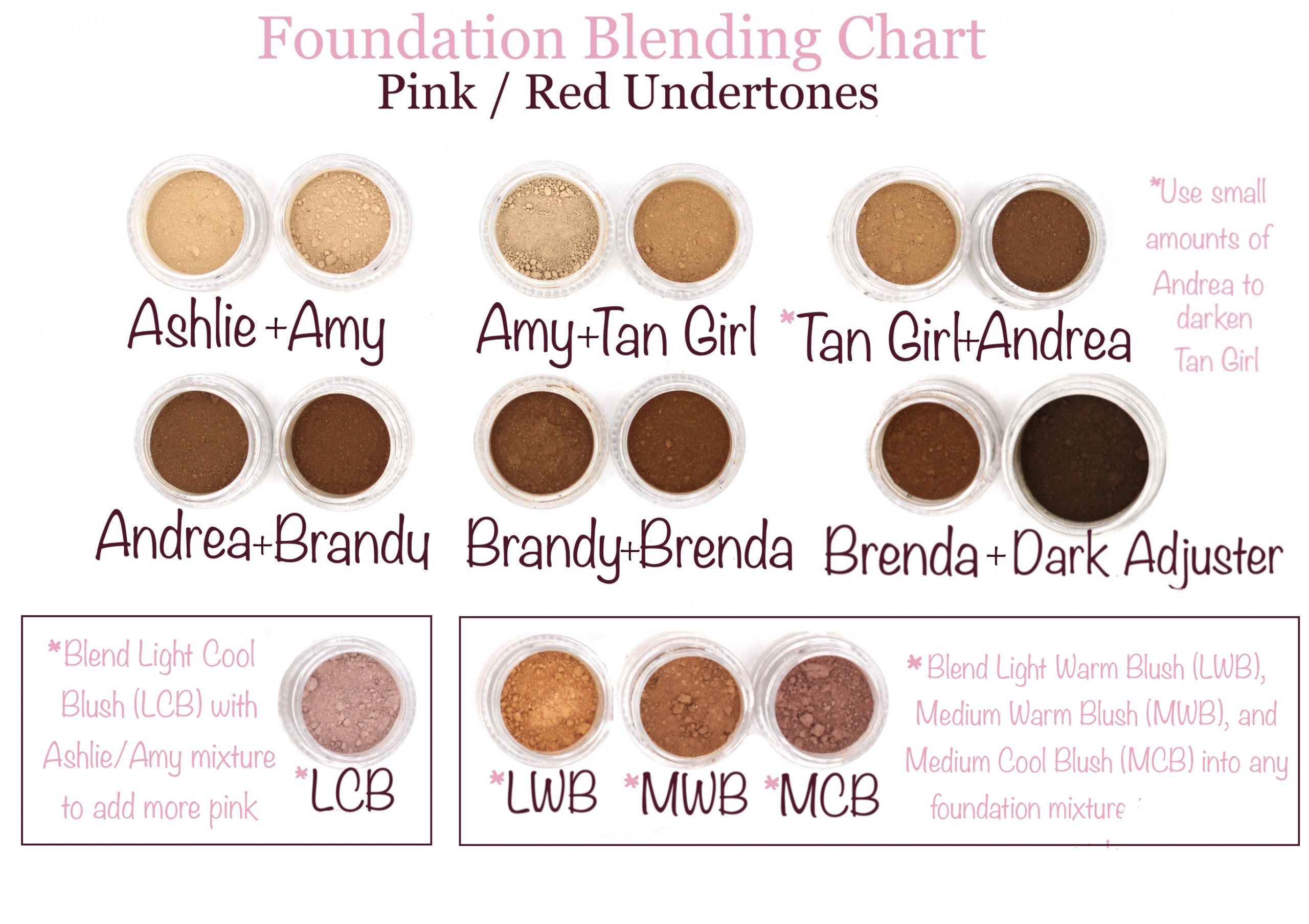There are three types of sunscreens; physical pigment-based UVA/UVA blockers, chemically based UVA/UVB blockers, and sun-avoidance habits, such as wearing wide-brimmed hats, and staying away from direct sunlight during the hottest parts of the day.
Monave Loose Mineral Foundations and Monave Concealer Foundations both contain high amounts of mineral pigments which happen to be strong UVB/UVA blockers. These two minerals are titanium dioxide, and zinc oxide. Titanium dioxide sometimes gets a bad rap, but it’s a very safe, non-toxic mineral as long as you’re not breathing it in, in large quantities, such as if you worked in a furniture or paint manufacturing facility, without proper ventilation and protection against dust particles. Zinc oxide is a wonderful pigment not only for its UVA and UVB absorption properties, but also for its anti-inflammatory properties.
Monave uses titanium dioxide to provide coverage and a white color in the blends of pigments used to create the foundation color line. The lighter the shades are, the more titanium dioxide and zinc oxide is present in the formula. This means that the lighter shades have as much as 50% of these white, light-scattering pigments, while the darker shades may only have 10% of these pigments. So, unintentionally, Monave’s foundations gradually increase in UVA/UVB protective pigments with each successively lighter foundation shade. This is ideal in scope for the variety of complexions our customers have, as the lighter someone’s skin tone is, the higher their sunscreen content should be.
Not to get too technical, but we are asked this question a lot. What are the particle sizes on our Ti02 and Zinc Oxide? We use two types of zinc oxide in our concealer foundations, both standard, and micronized. The micronized zinc is used for reasons other than sunscreen (again, a happy accident) in our formula, but it boosts the sunscreen capacity of this line of loose powder foundation, which is heavier and conceals blemishes better than the standard Loose Mineral Foundation formula. It also offers anti-inflammatory properties of zinc oxide to those who suffer from skin conditions such as rosacea and acne.
Titanium Dioxide 1.7 microns (1700 nanometers)
Zinc oxide .46 to .58 microns (460-580 nanometers)
Micronized zinc oxide: 30-55 nanometers
For your reference, there are 1000 nanometers in a micron
There have been concerns over the years about micronized, nano-particle sized ingredients in cosmetics. Monave subscribes to regulatory policies supported by the Environmental Working Group, and its subsidiary, The Campaign for Safe Cosmetics. To date, EWG has not mandated removing the micronized zinc oxide from our concealer foundations, because extensive testing has not been conclusive in determining that micronized zinc oxide is harmful to human health. For more information on the EWG stance, here is a great article reviewing the history behind the research and where we are now with this issue.
https://www.ewg.org/sunscreen/report/nanoparticles-in-sunscreen/
In terms of making claims about the SPF of Monave Loose Mineral Foundation, or Monave Concealer Foundation, we cannot do so. We have not gone through any formal testing, and have not been approved by the FDA to make claims as to the sunscreen properties of our foundations, lipgloss, or other products. That being said, we have found over the years, that with proper application, our foundations serve as excellent partners in your arsenal of summer protection. Many of our customers use it exclusively as their summer skin protection on the face, neck and ears, however we cannot propose that you do this without a precautionary statement about the necessity of an even and thorough application.
Monave also uses these pigment blends in a variety of cream bases to form liquid foundations, including our Liquid Matte, Cream Concealer, and Mousse foundations. In these formulas, the ratio of pigment to cream is 1 to 5, so you can see how the summer protection qualities of the powdered foundation become diluted in these applications. So, we suggest proceeding with caution, and trying small patches of skin on your arm first, to see what kind of protection from the summer elements you can achieve, before proceeding without any other protection.
We highly recommend not putting your face or body out in direct sun in the middle of the day. Sit under a tree, or an umbrella during these times, if you’re vacationing at the beach, or head out for a few hours in the morning, and then take a siesta indoors once the sun is nearing its peak. Sunburns are no joke. They may heal in a few weeks, but they can set a precedent for skin cancer later in life, so you can’t be too careful about protecting your skin.
For a tutorial on creating maximum coverage with our mineral foundations, check out this short, detailed video:
https://youtube.com/watch?v=V9ofz6jJJKA%2520frameborder%3D0%2520allow%3Daccelerometer%3B%2520autoplay%3B%2520encrypted-media%3B%2520gyroscope%3B%2520picture-in-picture%2520allowfullscreen
What about the rest of your body? In our opinion, lotion-based sunscreens with micronized zinc oxide are still your healthiest and safest option. Look for ingredients such as stearic acid (avoid palm stearic acid because of deforestation issues in orangutan habitats), and beeswax, oils and waxes such as shea, coconut, olive, sunflower, sesame, apricot, or grapeseed. Avoid products with methylparaben propylparaben, dyes, lakes, and fragrance. Essentials oils are nature’s best scents, but avoid products with citrus oils in the summer, as they can create photo sensitivity.
There are a lot of chemical sunscreens out there. We don’t advise purchasing products which contain them due to their potential for causing harm to the human body. EWG has a great table for your reference. Print it out and keep it on your when you’re shopping for summer protection products, and try to avoid brands and products which contain these toxins.




For more information about toxins in sunscreens please check out this great article by EWG
https://www.ewg.org/sunscreen/report/the-trouble-with-sunscreen-chemicals/




